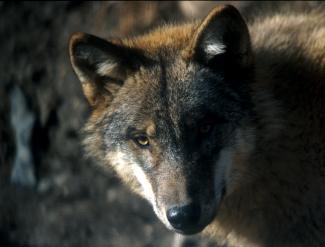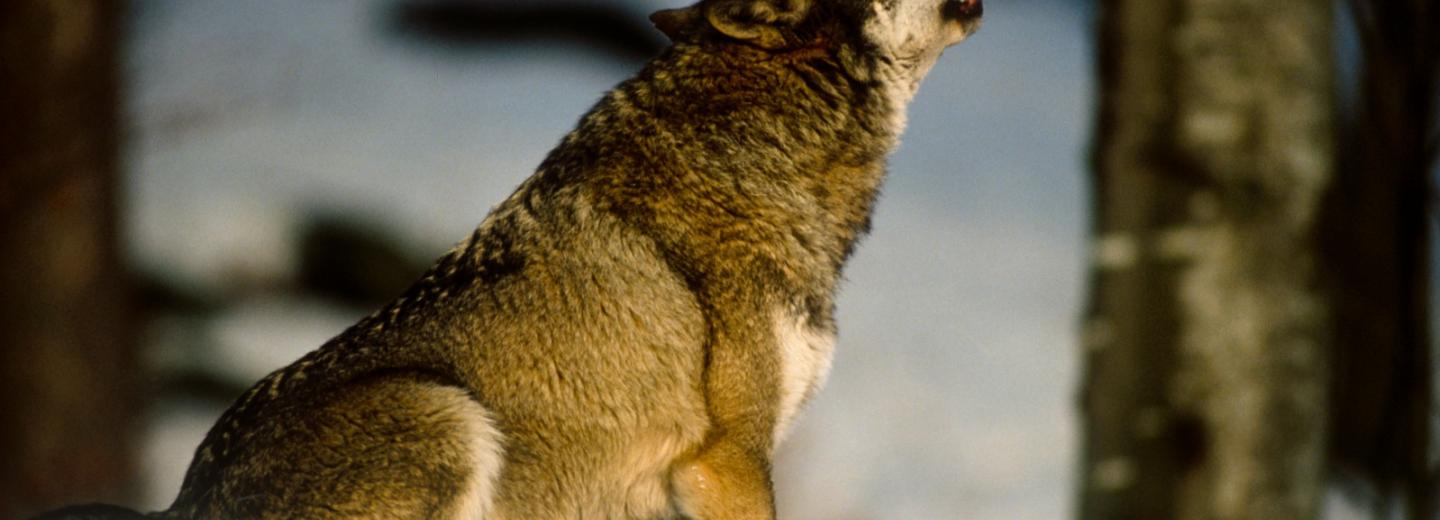
Given the versatility of the species, one can say that it is not so much the type or structure of the vegetation or the altitude that determines the spread of the wolf, but rather the presence of caves and places that offer shelter, availability of food, and a reduced human presence.
In winter its coat is long and thick with a greyish colour; in summer, however, its fur is short, not so dense, silky and reddish-brown in colour.
It is 100-140 cm long, with 30-35 cm for its tail, while its height at the wither is 60-75 cm; its weight varies from 20 to 45 kg. It is essentially a carnivorous animal and its chosen preys are large wild hoofed animals. In certain situations the predator's attention shifts to domestic animals and alternative sources of food, those which are usually of secondary importance, such as small wild mammals, dogs, cats, insects, vegetables and refuse. Notoriously a social animal, it lives in highly organized and rigidly structured packs. Reported sightings of wolves in the park are relatively frequent and go back over ten years. There are tracks visible and direct sightings almost exclusively in the Val d'Aosta valleys. The majority of these reports lead to a single specimen, whose genetic characteristics are being evaluated by international experts.
